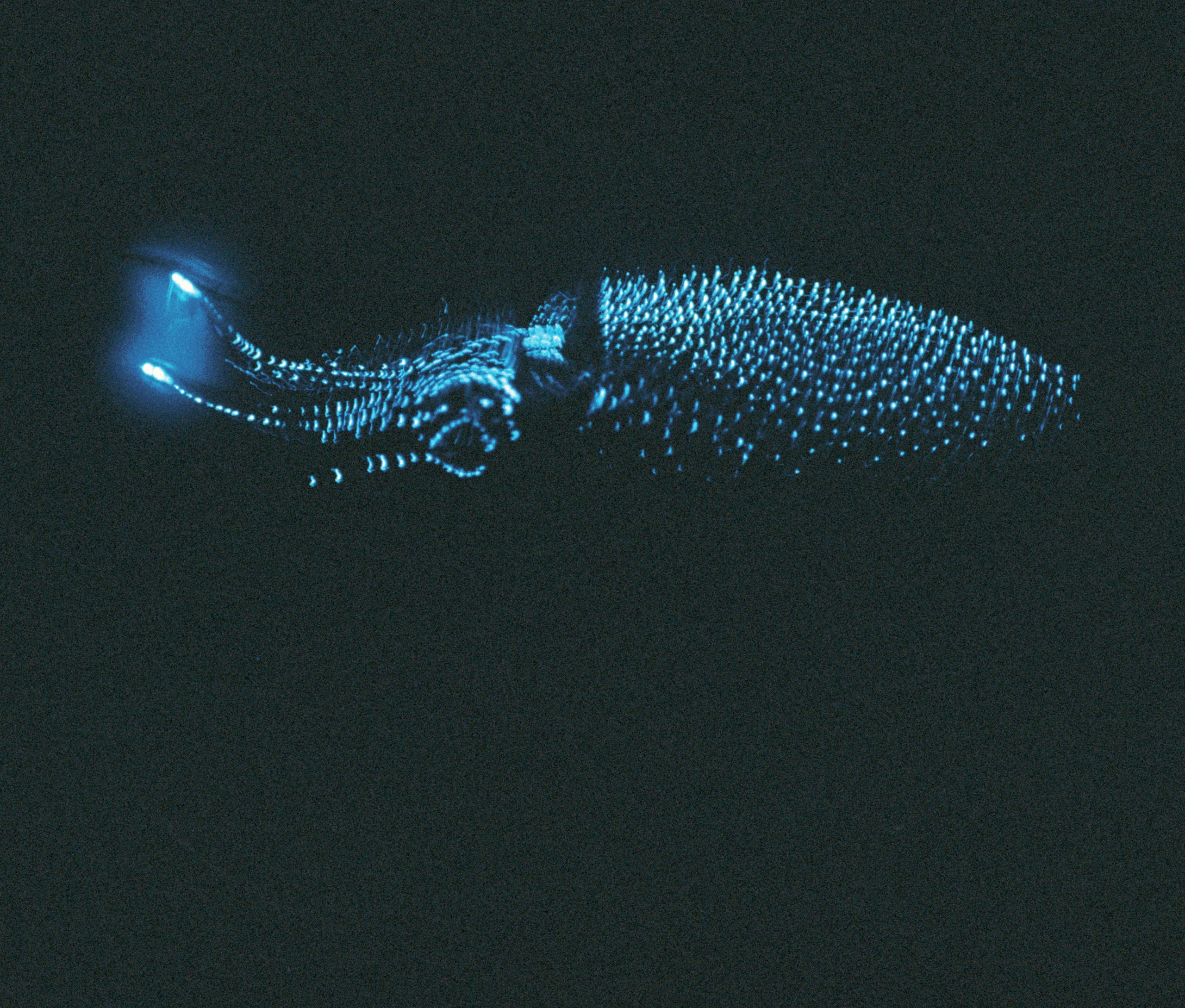
Deep in the northwestern Pacific Ocean, off the coast of Japan, lives the remarkable Japanese firefly squid (Watasenia scintillans). It is only about 7.5 cm long and spends its days swimming around at depths of 200–600 metres. As it descends into the ocean, the intensity of sunlight decreases and the colour of the light also changes with increasing depth. The longer wavelengths of visible light (at the red end of the spectrum) are absorbed first by the water molecules, because light at these wavelengths has lower energy. Blue light is absorbed last, as the shorter wavelengths of light have higher energy and therefore penetrate further into the water. By a depth of 450 metres all of the light from the Sun has been absorbed, so it should be completely dark, and yet there is still light courtesy of bioluminescent organisms such as the firefly squid.
The firefly squid appears to sparkle, as it produces blue light from hundreds of tiny organs called photophores scattered over its body. It produces particularly intense flashes of light at the tips of a pair of arms, which attract small fish for the squid to feed on.
Your organisation does not have access to this article.
Sign up today to give your students the edge they need to achieve their best grades with subject expertise
Subscribe




